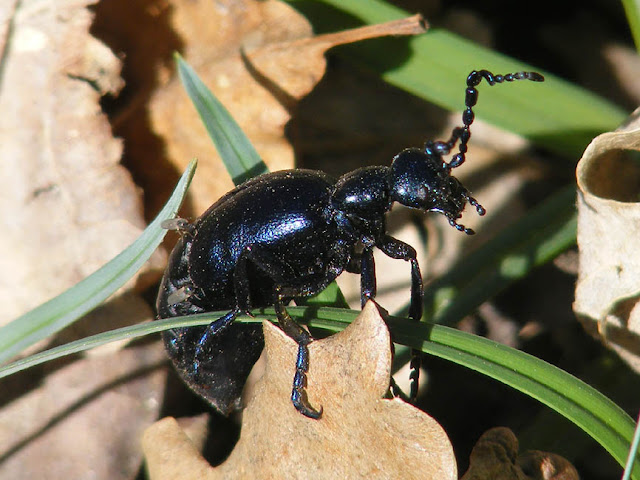Male oil beetles have 'elbowed' antennae, used for gripping the female.
Oil Beetles are so called because they are part of a family which protect themselves by synthesising a deadly poison called cantharidin in their bodies. If threatened they ooze orange 'blood' from their joints. A minute amount ingested by a mammal works like viagra (Spanish Fly is in the same family of beetles), but even very small doses can kill, as it is as poisonous as strychnine. The cantharidin laden body fluid most commonly causes blisters (hence their other name of Blister Beetles) when the beetles are touched. Mostly though, predators know to avoid these dangerous creatures.
Mating Violet Oil Beetles in the Forêt de Preuilly, the much larger female on the left.
Recently there has been some promising new research, and it seems that cantharidin may be a useful anti-cancer drug. It's early days yet in the research, but mice with cancer have been treated with a compound extracted from meloid beetles, and the results have been remarkably good.



1 comment:
Great photographs. These are really amazing beasts.
Post a Comment